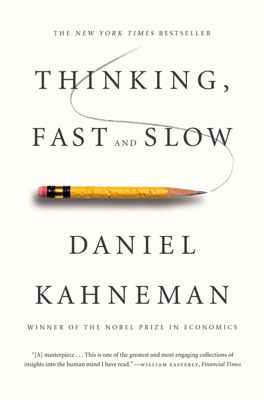The Endowment Effect
The Endowment Effect and Reference Points
Key Concepts and Fundamental Errors:
- Textbook indifference maps (utilized in economics to show combinations of goods that yield the same utility), typically don't include a person's reference point or status quo. Ignoring these reference points fosters a misunderstanding since changes are perceived relative to this reference, influencing decision-making significantly. This is termed as "theory-induced blindness" where the elegance of a theoretical model overshadows its practical gaps.
- Prospect Theory emphasizes that the reference point significantly shifts how options are valued. Kahneman uses an example of "hedonic twins" Alberto and Ben to demonstrate how their current job positions influence their preferences for new job offers due to loss aversion, indicating that disadvantages in changes often outweigh perceived advantages.
Historical Context and Emergence of Behavioral Economics
- Behavioral economics' origins trace back to Richard Thaler's observations in the 1970s regarding anomalies in rational economic theory through personal anecdotes such as Professor R's reluctance to sell wine from his collection for substantially high prices—a clear diversion from expected economic behavior that valued an item consistently irrespective of ownership.
- Prospect theory extended by Kahneman and Tversky suggested that such erratic valuation was due to discrepancies in loss aversion between owning and not owning an item, suggesting two different values based on the current reference point.
Experiments Illustrating the Endowment Effect
- Experiments with mugs, conducted by Kahneman, Thaler, and Jack Knetsch, highlighted that people placed significantly higher value on items they owned (mugs handed out randomly during the experiment), demonstrating the endowment effect. Owners typically had much higher selling prices compared to non-owners' buying prices.
- Further examinations in different environments showed that veteran traders and people constantly engaged in market activities did not exhibit the endowment effect as their reference points adjusted quickly, indicating that constant engagement in trade can mitigate the impact of loss aversion.
Practical Implications and Broader Influence
- The behavior of condo apartment owners during market downturns, studies on product pricing, and consumer behaviors underline the broad applications of loss aversion and endowment effects, showcasing how individuals under different scenarios (e.g., the affluent, poor, or culturally distinct groups) exhibit varied responses to gains and losses based on their disparities in reference points and perceived values.
Conclusions and Observations
- Further research is encouraged to explore the dynamics of the endowment effect across different cultures and socioeconomic backgrounds, exemplified by varying results between experiments in the U.S and the U.K., pointing to potential cultural influences on economic behavior and decision-making tied to loss aversion and reference points.
The chapter underscores the importance of acknowledging reference points in understanding consumer behavior, market dynamics, and broader economic theories, demonstrating that traditional economic models may not fully capture human behavior's complexity without incorporating psychological elements from prospect theory.
